Transform your home into a serene sanctuary. Discover 10 tips for a peaceful haven. Read on for a tranquil space
In today's fast-paced world, our homes can often feel more like chaotic command centers than
peaceful retreats. Between demanding jobs, family responsibilities, and the constant barrage of digital distractions, finding serenity within our own four walls can seem like an impossible dream.
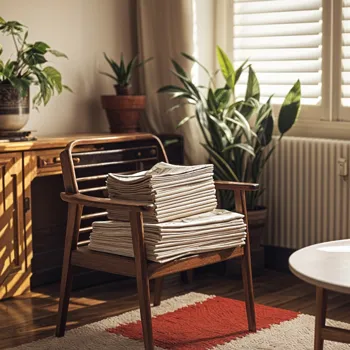
But fear not, dear readers! Creating a sanctuary in your home is not only achievable but also essential for your well-being. It's about crafting a space where you can truly relax, recharge, and reconnect with yourself.
Think of it as your personal oasis, a refuge from the hustle and bustle of everyday life. And the best part? It doesn't require a complete home makeover or a hefty budget. With a few mindful adjustments and simple changes, you can transform your living space into a haven of tranquility.
Ready to embark on this journey of creating your own serene home environment? We've compiled 10 practical and easy-to-implement tips that will help you achieve a sense of calm and balance in your living space.
These tips are designed to address various aspects of your home, from decluttering and organization to incorporating natural elements and mindful practices.
Remember, the goal is not to create a perfectly pristine or sterile environment but rather a space that reflects your personality and nurtures your soul. So, let's dive in and discover how you can turn your home into a sanctuary of peace and tranquility!
These ten ways will bring in a good amount of happy place at your house. This will help with feeling so good.
Declutter Your Space, Declutter Your Mind
Clutter is the enemy of serenity. A cluttered home can lead to a cluttered mind, making it difficult to relax and focus. Start by tackling one area at a time, whether it's a drawer, a shelf, or an entire room. As you declutter, ask yourself if each item truly serves a purpose or brings you joy.
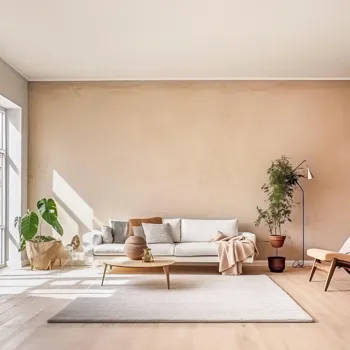
If not, consider donating, selling, or discarding it. Be ruthless in your decluttering efforts, but also be mindful of sentimental items. Create a designated space for treasured keepsakes so they don't contribute to the overall clutter.
Once you've decluttered, implement strategies to prevent clutter from accumulating again. This could involve adopting the "one in, one out" rule, where you get rid of one item for every new item you bring into your home.
Regular decluttering sessions, even just for 15 minutes a day, can make a big difference in maintaining a serene environment.
Embrace Natural Light and Ventilation
Natural light has a profound impact on our mood and well-being. Open your curtains and blinds to let in as much natural light as possible. Consider using sheer curtains or blinds that allow light to filter through while providing privacy.

If your home doesn't receive much natural light, you can supplement it with full-spectrum light bulbs that mimic the effects of sunlight. Proper ventilation is also crucial for creating a healthy and serene home environment.
Open windows regularly to allow fresh air to circulate and remove stale air. Consider investing in an air purifier if you live in an area with poor air quality. Indoor plants can also help purify the air and add a touch of nature to your living space.
Good light and air will lead to a healthy mind being in a helathy body. Do this daily.
Incorporate Nature Indoors
Bringing elements of nature into your home can have a calming and restorative effect. As mentioned earlier, indoor plants are a great way to purify the air and add visual interest. Choose plants that are easy to care for and suit your living conditions.
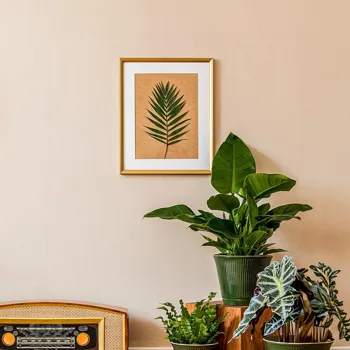
You can also incorporate natural materials like wood, stone, and bamboo into your décor. Consider using natural textures like cotton, linen, and wool for your upholstery, bedding, and curtains. The sound of water can also be incredibly soothing.
A small indoor fountain or even a bowl of water with floating flowers can create a sense of tranquility. Natural scents like lavender, eucalyptus, and sandalwood can also promote relaxation and reduce stress. Even having a small fish tank in your living room works like a wonder.
Create a Dedicated Relaxation Zone
Designate a specific area in your home for relaxation and rejuvenation. This could be a cozy reading nook, a meditation corner, or a spa-like bathroom. Equip your relaxation zone with comfortable seating, soft lighting, and calming décor.
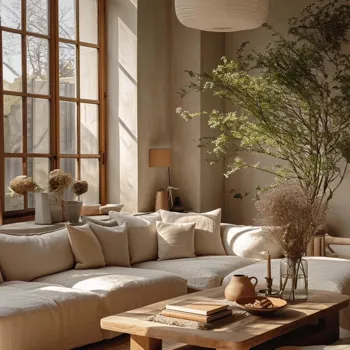
Add elements that promote relaxation, such as aromatherapy diffusers, calming music, or a collection of your favorite books and it should be a no phone zone. Keep this space free from clutter and distractions.
Make a conscious effort to spend time in your relaxation zone each day, even if it's just for a few minutes. Use this time to unwind, meditate, read, or simply relax and clear your mind. This area will act as a place of zen to you and your family. Always keep it quite and clean.
Optimize Your Color Palette
Colors have a powerful impact on our emotions and mood. Choose colors for your home that promote relaxation and tranquility. Soft, muted tones like blues, greens, and grays are often associated with calmness and serenity.
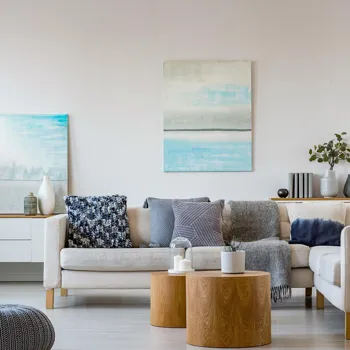
Avoid bright, stimulating colors like reds and oranges, especially in bedrooms and relaxation areas. You can also use color to create a sense of harmony and balance in your home. Choose a consistent color palette throughout your living space to create a cohesive and calming atmosphere.
Consider using different shades and textures of the same color to add depth and visual interest. Colors are important. One good colour will set everything in place. Dark colour gives a bad vibe and vice versa.
Mindful Soundscapes
Be mindful of the sounds in your home. Excessive noise can be a major source of stress and anxiety. Minimize noise pollution by blocking out external sounds with thick curtains or soundproofing materials.

Create a calming soundscape by incorporating relaxing music, nature sounds, or even silence, if you prefer. Invest in noise-canceling headphones if you need to block out distractions while working or relaxing. Be mindful of the sounds you create in your home.
Avoid slamming doors, shouting, or playing loud music. Encourage a sense of quiet and respect for others' need for peace and tranquility. The kind of sound and music will make the environment and set the vibe for everything. Slow, soothing music is good.
Engage Your Sense of Smell
Aromatherapy to the rescue! Certain scents can trigger relaxation and promote a sense of well-being. Essential oil diffusers are a fantastic way to infuse your home with calming aromas. Lavender, chamomile, and sandalwood are known for their relaxing properties.

Scented candles and incense can also create a soothing atmosphere, but always choose natural scents and avoid synthetic fragrances. Place scented sachets in drawers and closets to keep your clothes and linens smelling fresh and clean.
Fresh flowers also add a pleasant scent and a touch of natural beauty to your home. Scents make the home. Even a simple aroma smells really good and puts everyone in a light mood.
Technology Detox
In today's digital age, it's easy to become glued to our screens. But excessive screen time can lead to stress, anxiety, and sleep disturbances. Establish boundaries with technology to create a more serene home environment. Designate tech-free zones in your home, such as the bedroom or dining area.
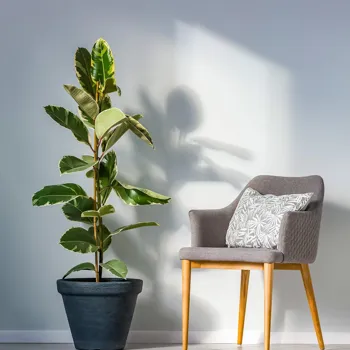
Set aside specific times for checking emails and social media, and avoid using electronic devices an hour or two before bed. Encourage family members to engage in activities that don't involve screens, such as reading, playing games, or spending time outdoors.
A technology-free environment can help you disconnect from the digital world and reconnect with yourself and your loved ones. Create a schedule for the whole family.
Practice Mindful Activities
Incorporate mindful activities into your daily routine to promote relaxation and reduce stress. Meditation, yoga, and deep breathing exercises can help you calm your mind and body. Spend time outdoors in nature, even if it's just for a short walk in the park.
Practice gratitude by focusing on the positive aspects of your life. Engage in hobbies that you enjoy, such as painting, gardening, or playing a musical instrument. These activities can help you unwind, express your creativity, and boost your overall well-being.
Taking time out for yourself to relax and mediate may help everyone at the household. Even taking a walk in nature works.
Cultivate Positive Relationships
Our relationships have a significant impact on our well-being and the overall atmosphere of our home. Cultivate positive and supportive relationships with family members, friends, and neighbors.
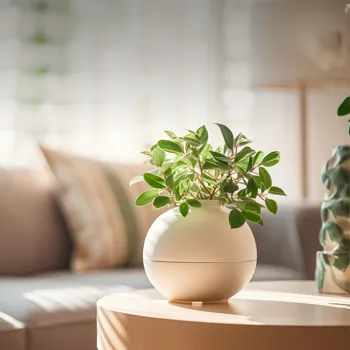
Create opportunities to connect with loved ones, whether it's through shared meals, game nights, or simply spending quality time together. Practice active listening and empathy in your interactions with others.
Avoid gossip, negativity, and conflict, which can create stress and tension in your home. A home filled with love, laughter, and positive energy is a true sanctuary of peace and tranquility. Be kind to people. Be gentle and enjoy their presence!
By implementing these 10 tips, you can transform your home into a serene sanctuary where you can relax, recharge, and reconnect with yourself. Remember, creating a peaceful home environment is an ongoing process, not a one-time fix.
Be patient with yourself, experiment with different strategies, and find what works best for you and your family. With a little effort and mindfulness, you can create a home that truly nourishes your body, mind, and soul.
Remember, your home should be your happy place!
Make sure to include everyone and do what is the best for them because their peace of mind is important above all!
AI Generated Content. Glance/InMobi shall have no liability for the content









